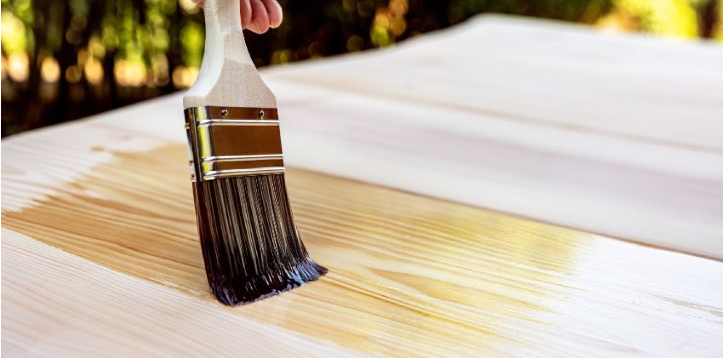Whether you’re a woodworking novice or a seasoned pro looking to enhance your staining skills, read more to discover the secrets behind achieving stunning, professional-looking results with wood conditioners.
Wood conditioner, a vital tool in your staining toolbox, plays a crucial role in creating a smooth and even surface by minimizing blotching and uneven stain absorption. By penetrating the wood and sealing its pores, it ensures that the stain is applied consistently and flawlessly. In our beginner’s guide to pre-stain wood conditioner, we’re here to take you by the hand and guide you through every essential aspect you need to know.
From understanding why wood conditioner is important to learn how to apply it effectively, we will cover all the facts.
Understanding Wood Conditioner
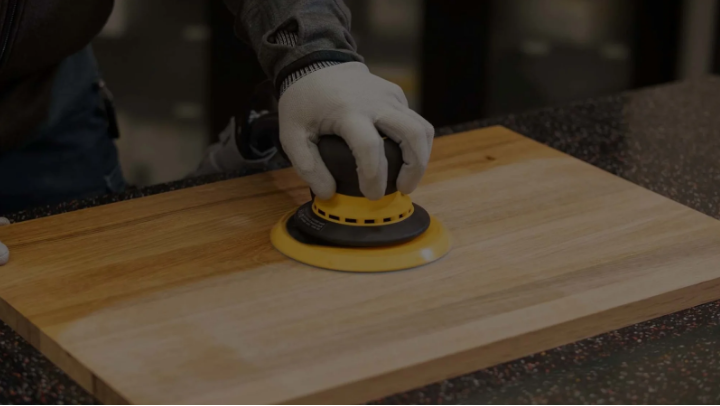
Using a wood conditioner is a wise step in any woodworking project. Wood conditioners are substances that are applied to wood surfaces before staining or finishing to enhance the overall appearance and durability of the wood. These conditioners play a vital role in preventing issues such as blotching, uneven color absorption, and raised grain that commonly occurs when staining untreated wood.
Wood conditioners work by penetrating the wood fibers and temporarily sealing the surface, which helps to regulate the absorption of stain or finish. By minimizing uneven absorption, wood conditioners ensure a more uniform and professional-looking finish. Additionally, they can help to reduce the occurrence of splintering or raised grain, which can compromise the smoothness and integrity of the final result.
Different wood conditioners may have varying effects on different wood species. By understanding the role and application of wood conditioners, woodworkers can ensure excellent results. It can enhance the beauty and longevity of their creations.
Exploring Various Wood Conditioners
Wood conditioners play a vital role in the preparation of wood for finishing. There are various types of wood conditioners available, each catering to specific needs.
1. Pre-Stain Wood Conditioner
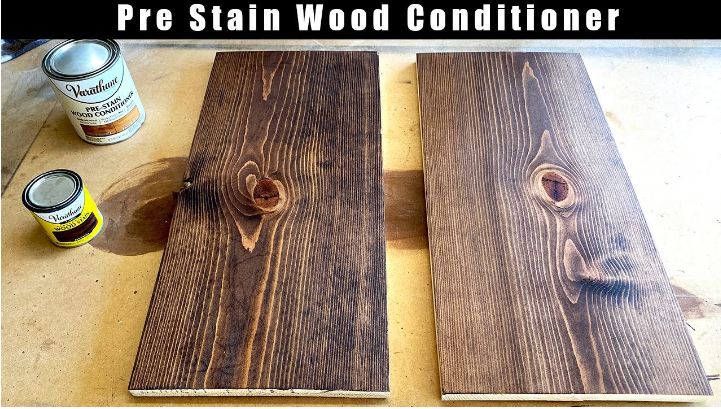
This type of wood conditioner is designed to even out the absorption of stains on different wood surfaces. It is particularly useful for preventing blotching and achieving a uniform color. By penetrating the wood fibers, it prepares the surface for stain application, resulting in a more consistent and professional finish.
2. Grain Filler
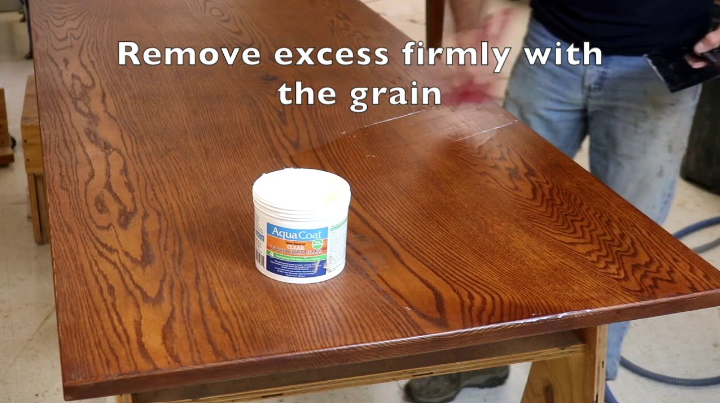
Grain fillers are wood conditioners that fill the pores and grain of open-pored woods, such as oak or mahogany. They create a smooth, level surface for the subsequent coats of finish, allowing for a more refined and polished look. This type of wood conditioner is often used in furniture making and cabinetry to achieve a flawless finish.
3. Water-Based Wood Conditioner

These types of conditioners are specifically formulated to complement water-based finishes and offer several benefits. First and foremost, they help prevent blotching, which can occur when the wood absorbs paint unevenly, resulting in splotchy patches. By using a water-based wood conditioner, you can mitigate this issue and achieve a more consistent and uniform color on your wood surface.
The Magic of Wood Conditioners

1. Wood conditioners are essential products that offer numerous benefits for those working with wood. Using a wood conditioner can greatly improve your woodworking projects, whether you’re an experienced woodworker or just enjoy DIY projects. These products are designed to prepare the wood surface before applying stains or finishes, ensuring a smooth and even result.
2. One of the primary benefits of wood conditioners is their ability to prevent blotching. When certain wood species, such as pine or cherry, are stained without prior conditioning, they tend to absorb stains unevenly, resulting in unsightly blotches. Wood conditioners penetrate the wood fibers, sealing them and creating a more uniform surface for the stain to adhere to. This prevents blotching and ensures consistent coloration across the wood.
3. Additionally, wood conditioners help to reduce grain raising. Using water-based finishes on wood can make it rough and uneven because the wood fibers absorb the moisture and swell. By applying a conditioner, the wood fibers are sealed, preventing excessive absorption of the finish and minimizing grain raising. This allows for smoother and more professional-looking finishes.
4. Wood conditioners can enhance the overall durability of wood projects. They penetrate the wood, reinforcing the fibers and providing a protective barrier against moisture and other environmental factors. This helps to prevent warping, cracking, and other forms of damage, prolonging the lifespan of your woodwork.
5. Using wood conditioners before staining or finishing wood surfaces offers several advantages. It ensures a consistent and even coloration, reduces grain raising, and enhances the overall durability of the wood. Using wood conditioners when working with wood can help you get better results and make your projects look nicer and last longer.
Factors to Consider While Choosing the Right Wood Conditioner
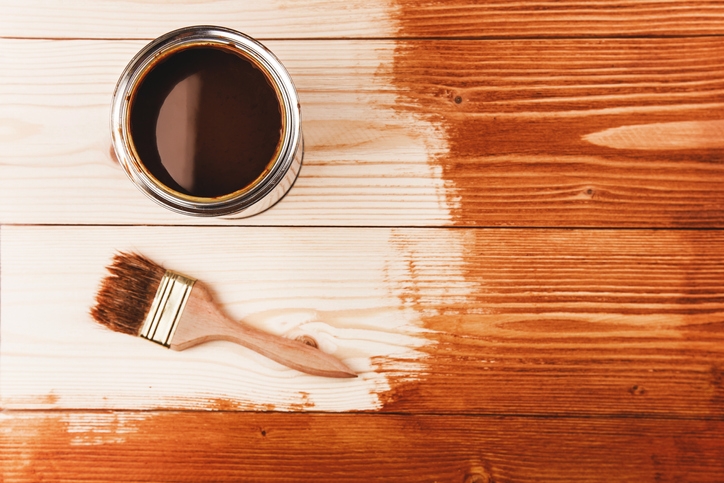
Using a wood conditioner is important for getting a smooth and perfect finish when working with wood. Whether you are staining, painting, or varnishing, a wood conditioner helps to prepare the wood surface for optimal absorption and reduces issues such as uneven color distribution, etc. However, choosing the right wood conditioner can be a daunting task. Consider these tips to make a good decision.
1. First, think about the kind of wood you’re using. Different types of wood have varying levels of porosity and absorbency. For dense hardwoods like oak or maple, a thinner wood conditioner is recommended, as it will penetrate the wood more effectively. Softwoods, on the other hand, benefit from a thicker conditioner that helps prevent excessive absorption.
2. Secondly, take into account the project you are undertaking. If you are staining a large piece of furniture or an outdoor deck, opt for a wood conditioner that provides long-lasting protection against weathering and UV rays. Look for products specifically designed for exterior use. For smaller indoor projects, choose a wood conditioner that offers a smooth finish and enhances the natural beauty of the wood.
3. Next, consider the application method. Wood conditioners are available in various forms, such as liquids, gels, or aerosols. Liquids are versatile and can be easily applied with a brush or cloth, while gels are ideal for vertical surfaces as they cling to the wood. Aerosols offer convenience and ensure even distribution, especially for intricate or hard-to-reach areas.
4. Lastly, read product reviews and seek recommendations from experienced woodworkers. Find wood conditioners that are known for working well and are liked by people who work with wood.
By considering the type of wood, project requirements, application method, and informed opinions, you can choose the right wood conditioner. Remember, selecting the appropriate wood conditioner is an investment in the longevity and aesthetic appeal of your woodwork.
Effective Techniques for Applying Wood Conditioner
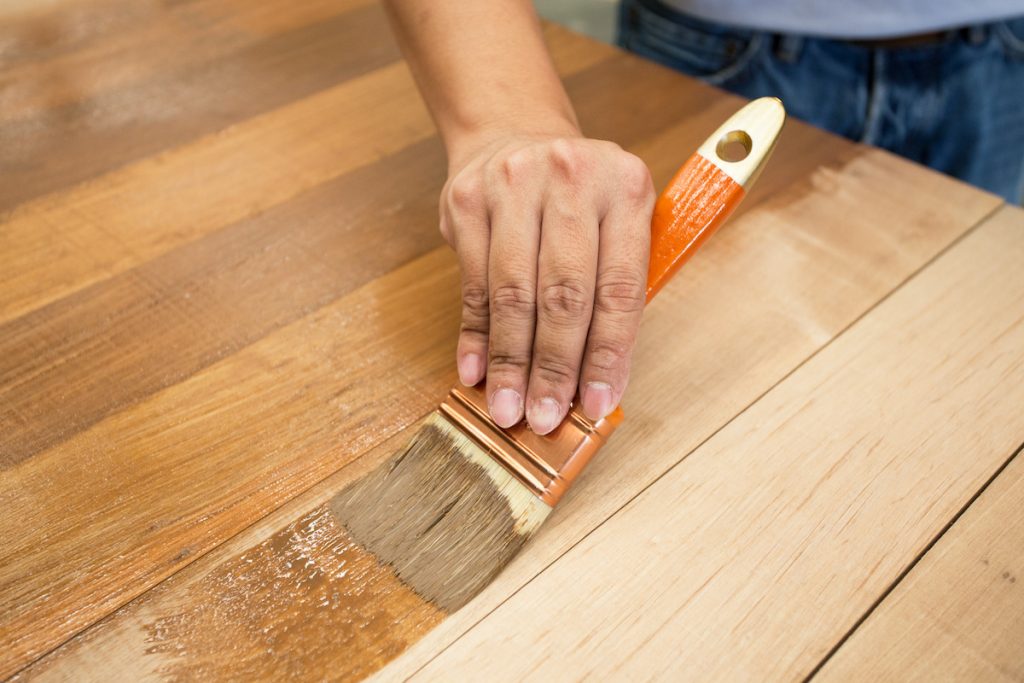
1. Wood conditioner is a crucial product used in woodworking to enhance the overall appearance and durability of wood surfaces. By penetrating the wood fibers and creating a smooth base, it prepares the wood for subsequent finishes such as stains or varnishes. To achieve the best results when applying wood conditioner, several techniques can be employed.
2. Initially, you need to ensure that the wood is free from any kind of dirt or dust. It should be perfectly clean. Use a soft cloth or brush to clean the wood gently. Then, apply the wood conditioner evenly with a brush, rag, or sponge.
3. When using a wood conditioner, follow the instructions for how long it needs to dry. This allows the conditioner to fully penetrate the wood and prepare it for the subsequent finish. After the drying period, any excess conditioner can be wiped off using a clean cloth to prevent a sticky or tacky residue from forming.
4. For larger woodworking projects, it is advisable to work in small sections, applying the conditioner to one area at a time. This ensures that the wood conditioner does not dry out before it has been evenly spread across the surface. Apply the conditioner in the same direction as the wood grain for a uniform look.
5. Proper application techniques for wood conditioners involve ensuring a clean surface, using an appropriate applicator, following the manufacturer’s instructions, and working in small sections. By employing these techniques, woodworkers can achieve optimal results when using wood conditioner, resulting in a beautifully finished wood surface with enhanced durability.
Tips and Best Practices to Apply Wood Conditioners

Are you working on a DIY project, or are you refurbishing furniture? Well, these tips and best practices can help you the most out of utilizing the wood conditioner.
1. Understand the Purpose
Wood conditioner is primarily used to prepare the wood for staining. Its purpose is to even out the absorption of stain, preventing blotchiness and ensuring a more consistent finish. Remember that wood conditioner is not a stain itself but a pre-treatment.
2. Choose the Right Type
Wood conditioners come in oil-based and water-based formulations. Oil-based conditioners penetrate deeper into the wood, while water-based options are faster drying and have less odor. Consider the type of wood you’re working with and the desired outcome to select the appropriate conditioner.
3. Preparing the Wood
Before you apply the conditioner, clean the surface of the wood. Keep it free from dust or dirt particles. You should make the wood get rid of any imperfections and make it smooth. Preparing the wood properly will help it absorb the conditioner better and give you better results.
4. Application Technique
Apply the wood conditioner evenly using a clean brush, cloth, or foam applicator. Work in the direction of the wood grain to ensure proper penetration. Avoid over-application, as excessive conditioner can hinder stain absorption.
5. Follow the Drying Time
Allow sufficient drying time according to the manufacturer’s instructions. This step is crucial, as rushing the process can lead to uneven staining or adhesion issues.
6. Test on Scrap Wood
If you’re uncertain about how the wood conditioner will interact with your chosen stain, it’s wise to test it on a scrap piece of wood first. This allows you to assess the final appearance and make any necessary adjustments before applying it to your project.
Don’t forget to read and follow the instructions provided by the manufacturer for the specific product you’re using to ensure the best outcome.
Conclusion
This beginner’s manual to pre-stain wood conditioners has provided valuable insights and practical guidance for anyone venturing into the world of woodworking.
Throughout this manual, we have explored the significance of using wood conditioner before applying stain. By understanding its purpose, application techniques, and the benefits it offers, beginners can ensure their woodworking projects turn out exceptional. Using wood conditioners will give much-needed flair to your wood projects giving the clean finishing touches and longer life. The premium that the wood conditioners bring to your projects is unmatched!
Remember, becoming a pro in the art of woodworking takes time and practice. By incorporating the knowledge gained from this manual and experimenting with different techniques, beginners can start on their woodworking journey with confidence.
Frequently Asked Questions
What is the Purpose of Using a Wood Conditioner Before Staining?
A wood conditioner is applied to the surface to prevent uneven stain absorption and blotchy results. It helps to seal the wood pores and promotes a more even and consistent coloration.
How Do I Apply a Wood Conditioner?
To apply wood conditioner, start by ensuring a clean and sanded surface. Then, using a brush or rag, evenly spread the conditioner in the direction of the wood grain. Allow it to penetrate for the recommended time before wiping off any excess.
Can I Skip Using a Wood Conditioner Before Staining?
While it’s not mandatory, using a wood conditioner is highly recommended, especially for soft or porous woods like pine or cherry. It helps to achieve better stain results by minimizing blotching and ensuring a more professional finish.

